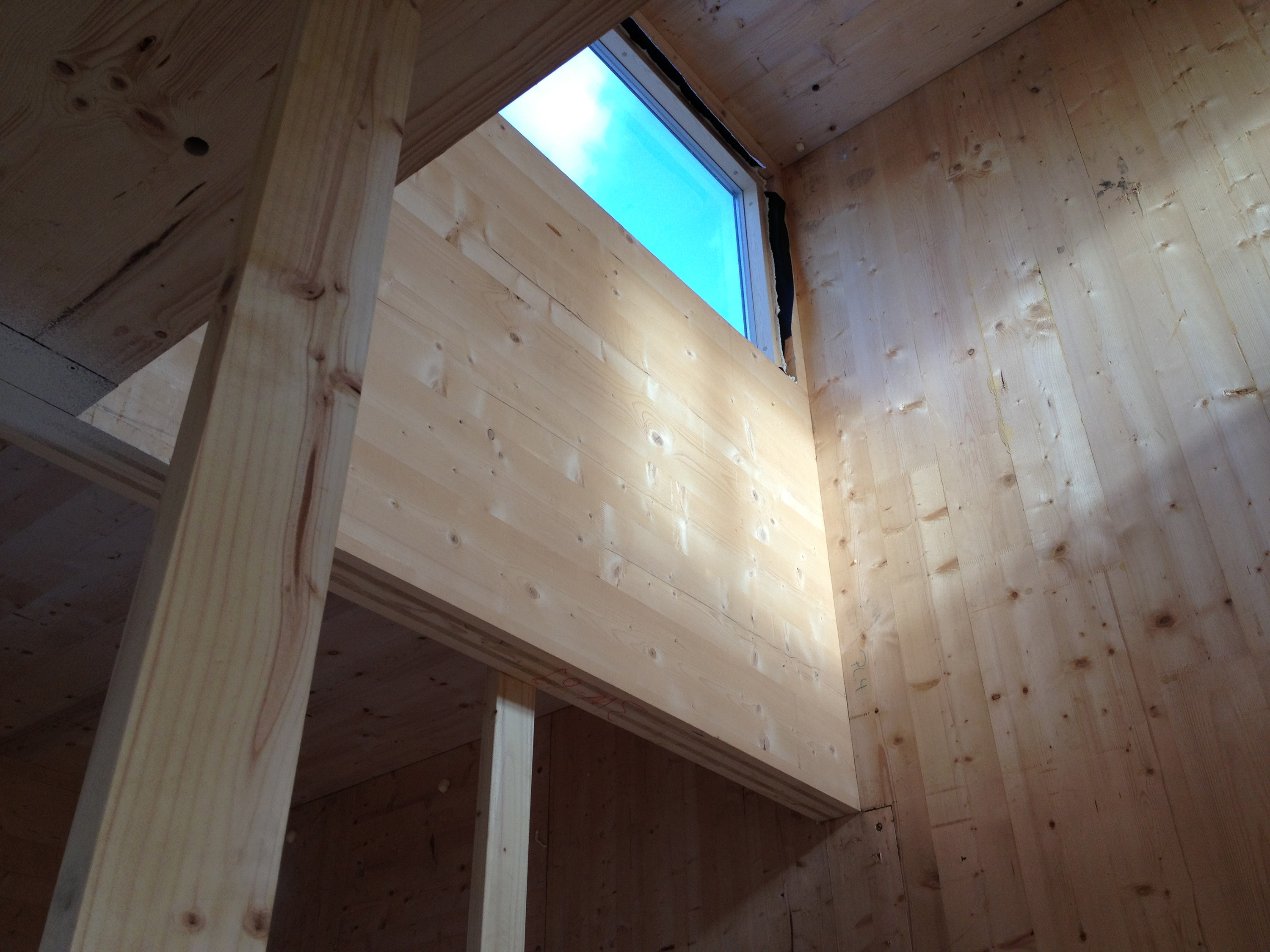

WTA partner Andrew Waugh formed a cooperative along with friends to develop this project on a prime canal-side site in Hackney, to realize a shared dream of living and working in a CLT building.
The seven-storey scheme provides two floors of canal-side office space, a double-height photographic studio and three triple-height family apartments with rooftop gardens.
The CLT structure, which sits on a lower concrete ground floor, is arranged to minimize lateral spans and maximize the multilateral strength of the material. For the studio, the party walls above the space act as deep beams and the north and south facades act as giant trusses, making a vast, 9m x 23m column-free space achievable in the centre of the building.
Further pushing the boundaries of timber design, its structural capabilities allow the entire lightweight, CLT structure to cantilever 1.5m over the canal-side.
The CLT structure was erected on the tight site, bounded on two sides by existing buildings and the third by the canal, within five weeks, by a four-man team.
The building is clad in sweet chestnut, a local, light durable hardwood. Timber reveals give depth to the elevations and large windows provide north light and canal views to the warm, quiet and insulated living and workspaces.
Die Webseite Ingenieurholzbau.de informiert über die Herstellung und das Bauen mit geklebten konstruktiven Vollholzprodukten wie Brettschichtholz (BS-Holz), Brettsperrholz (X-Lam oder BSP-Holz), Balkenschichtholz (Duobalken® oder Triobalken®) und Furnierschichtholz.